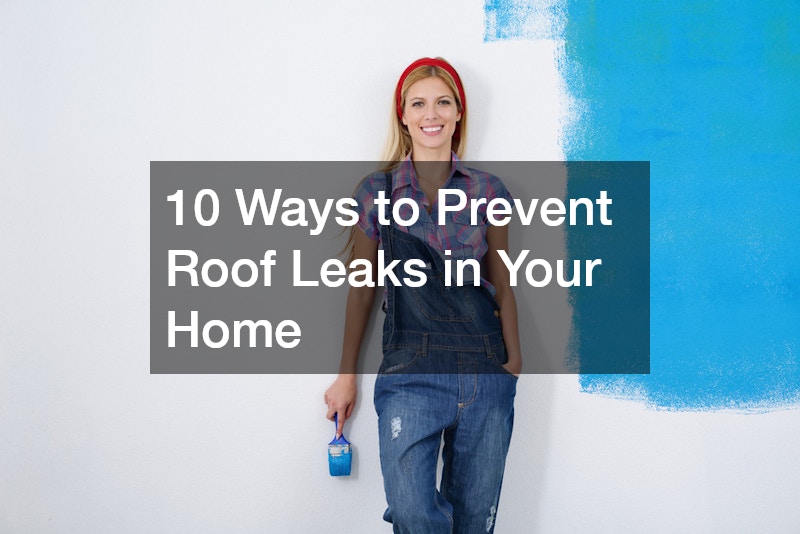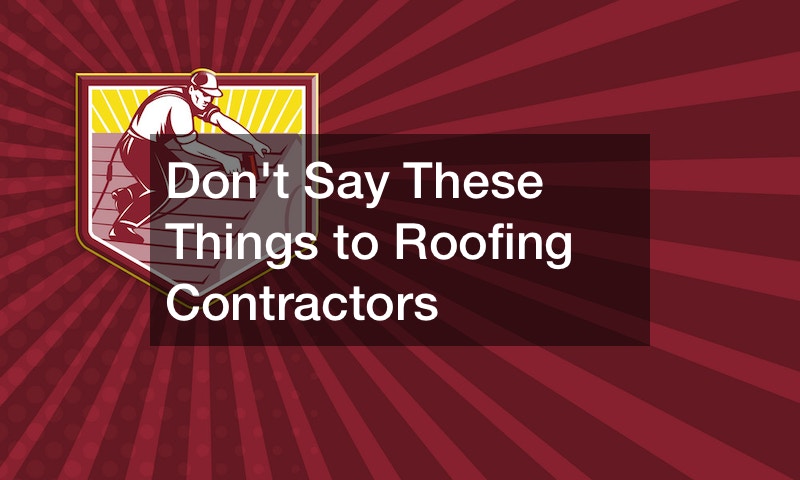Preventing roof leaks is crucial for maintaining the integrity and longevity of your home. A well-maintained roof is your primary defense against the elements, safeguarding your living space from water damage, structural issues, and potential health hazards. Roof leaks, if left unaddressed, can lead to significant and costly damage.
One of the most immediate impacts of a roof leak is water damage. When water infiltrates your home, it can damage ceilings, walls, and floors, leading to costly repairs. Prolonged leaks can weaken the structural components of your home, including the roof deck, rafters, and insulation. This degradation can compromise the safety of your home and require expensive structural repairs or even a full roof replacement.
Moreover, roof leaks can create ideal conditions for mold and mildew growth. Moisture accumulation in hidden areas, such as the attic or behind walls, can lead to mold infestations. Mold not only damages your home but also poses serious health risks, including respiratory issues, allergies, and other health problems. Preventing roof leaks helps avoid these health hazards and maintains a safe living environment.
In addition to protecting your home’s structural integrity and your health, preventing roof leaks can also enhance energy efficiency. A compromised roof can lead to heat loss or gain, increasing your heating and cooling costs. By ensuring your roof is leak-free, you maintain better control over your home’s temperature, potentially reducing your energy bills.
Overall, preventing roof leaks is essential for preserving the value of your home, ensuring a healthy living environment, and avoiding costly repairs. Regular maintenance, timely repairs, and proactive measures help safeguard your home and provide peace of mind.
A well-maintained roof is essential for safeguarding your home against the elements and ensuring its structural integrity. Roof leaks are a common issue that can lead to extensive damage, resulting in costly repairs and potential health hazards. Addressing and preventing roof leaks should be a top priority for homeowners to maintain a safe and comfortable living environment via roofing companies. In this comprehensive guide, we will explore various strategies to prevent roof leaks, covering everything from routine maintenance to advanced repair techniques.
Understanding Roof Leaks and Their Impact
Before diving into prevention methods, it’s important to understand what causes roof leaks and their potential impact on your home. Roof leaks can stem from a variety of issues, including:
- Damaged Shingles: Shingles are the first line of defense against water infiltration. Damaged, cracked, or missing shingles can allow water to penetrate your roof.
- Improper Flashing: Flashing seals joints and roof penetrations, such as around chimneys, vents, and skylights. Improperly installed or damaged flashing can lead to leaks.
- Clogged Gutters: Gutters and downspouts direct water away from your roof. When clogged with debris, they can cause water to overflow and seep under roofing materials.
- Ventilation Issues: Poor attic ventilation can lead to excessive heat and moisture buildup, increasing the risk of leaks and ice dams.
- Aging Roof: As roofs age, they become more susceptible to damage from weather and environmental conditions.
Understanding these common causes will help you implement effective strategies to prevent roof leaks and extend the lifespan of your roofing system.
1. Schedule Regular Roof Inspections
One of the most effective ways to prevent roof leaks and roof replacements is to schedule regular roof inspections with roofers. Having a professional roofer examine your roof at least once a year can help identify potential issues before they become serious problems. During an inspection, a qualified roofing contractor will check for signs of damage, such as cracked or missing shingles, damaged flashing, and clogged gutters.
Roof inspections should ideally be performed in the spring or fall when weather conditions are milder. These inspections allow for a thorough examination of the roof’s condition, including the attic and any roof penetrations. Early detection of issues such as minor leaks or wear and tear can prevent more extensive damage and reduce the need for costly repairs. Additionally, some roofing companies offer maintenance plans that include regular inspections, making it easier for homeowners to stay on top of roof maintenance.
2. Keep Gutters and Downspouts Clean
Clogged gutters and downspouts are a leading cause of roof leaks. When gutters are obstructed by leaves, twigs, and other debris, they can no longer effectively direct water away from the roof. Instead, water may overflow, pooling on the roof and seeping under shingles or other roofing materials.
To prevent this, clean your gutters and downspouts regularly, particularly during the fall when leaves are falling and after heavy rainstorms. Remove debris and ensure that gutters are securely attached to the roof. Installing gutter guards or screens can also help minimize the amount of debris that enters the gutters, reducing the frequency of cleaning.
Properly functioning gutters are essential for directing water away from the roof and foundation. In addition to preventing roof leaks, clean gutters help avoid erosion and water damage to your home’s structure.

3. Inspect and Maintain Flashing
Flashing is a critical component of your roofing system, designed to seal joints and roof penetrations. Flashing is typically installed around chimneys, vents, skylights, and other areas where the roof meets vertical surfaces. If flashing is damaged or improperly installed, it can lead to leaks.
During regular roof inspections, pay special attention to the condition of the flashing. Look for signs of wear such as cracks, rust, or gaps. If you notice any issues, address them promptly by resealing or replacing the flashing as needed. Proper maintenance of flashing helps prevent water from seeping into your home and maintains the integrity of your roofing system.
4. Repair Damaged Shingles Promptly
Shingles play a vital role in protecting your home from roof leaks. Damaged or missing shingles can compromise the roof’s ability to shed water effectively, leading to leaks and water damage.
If you notice cracked, curled, or missing shingles, contact a local roofing company to have them repaired or replaced as soon as possible. Quick action can prevent water from penetrating your roof and causing further damage to the underlying structure. Regularly inspect your shingles for signs of wear and tear, and consult with a professional if you have concerns about their condition. Addressing shingle issues promptly helps extend the lifespan of your roof and maintains its effectiveness.
5. Trim Overhanging Tree Branches
Overhanging tree branches can pose a significant threat to your roof and hiring a residential roofing contractor. They can cause physical damage by scraping against shingles or dropping debris onto the roof. Additionally, fallen branches can block gutters, leading to water pooling and potential leaks.
To prevent this, regularly trim any overhanging branches away from your roof. This will help protect your shingles from damage and keep your gutters clear of debris. Consider professional tree maintenance services if you have large trees near your home. Regularly maintaining the trees around your property reduces the risk of damage from falling branches and helps keep your roof in better condition.
6. Ensure Proper Attic Ventilation
Proper attic ventilation is essential for preventing roof leaks and maintaining overall roof health through local roofing company. Good ventilation helps regulate temperature and moisture levels in your attic, which can prevent condensation buildup and reduce the risk of ice dams in colder climates.
Make sure your attic has adequate ventilation, including soffit vents, ridge vents, and exhaust fans. Proper ventilation helps maintain the integrity of your roof by preventing excessive heat and moisture accumulation. This not only extends the lifespan of your roofing materials but also improves your home’s energy efficiency, reducing heating and cooling costs.
Inadequate ventilation can lead to a range of problems, including premature aging of roofing materials, increased risk of mold growth, and higher energy bills. Ensure that your attic ventilation system is functioning properly to protect your roof and enhance the comfort of your home.

7. Install a Roof Underlayment
Roof underlayment is an additional layer of protection installed between your roof deck and shingles. It acts as a barrier against water infiltration, providing extra protection in areas prone to heavy rain or ice.
A high-quality underlayment can help prevent leaks by adding an extra layer of defense against moisture to protect your business via commercial roofer. Consult with a metal roof contractor or a commercial roofer to choose the best underlayment for your roofing system. The right underlayment can enhance your roof’s performance and provide added peace of mind, especially in regions with severe weather conditions.
Underlayment materials vary in quality and performance, so it’s important to select a product that meets the specific needs of your roofing system and climate. Investing in high-quality underlayment can improve the durability of your roof and help prevent leaks over the long term.
8. Address Roof Penetrations
Roof penetrations, such as those for vents, chimneys, and skylights, are common areas where leaks can occur and where a metal roof contractor could help. These penetrations can create openings that allow water to seep into your roof if not properly sealed and maintained.
Ensure that all roof penetrations are correctly installed and sealed. Check the seals around these areas regularly and repair any cracks, gaps, or damaged flashing promptly. A residential roofing contractor can help ensure that these penetrations are correctly installed and sealed, reducing the risk of leaks.
Proper maintenance of roof penetrations is crucial for preventing water infiltration and ensuring the longevity of your roof. Addressing these areas helps prevent potential water damage and maintains the effectiveness of your roofing system.

9. Invest in Quality Roofing Materials
The quality of roofing materials plays a significant role in preventing roof leaks and ensuring the durability of your roof. Investing in high-quality shingles, underlayment, and flashing can enhance your roof’s ability to withstand the elements and resist water infiltration.
While high-quality materials may come with a higher initial cost, they can save you money in the long run by reducing the need for frequent repairs and replacements. When selecting roofing materials, consider factors such as weather resistance, lifespan, and warranty coverage. Consult with roofing professionals to choose the best materials for your specific needs and climate.
Quality roofing materials provide better protection against leaks and can enhance the overall performance of your roofing system. Investing in durable materials ensures that your roof remains effective and reliable for years to come.
10. Plan for Roof Replacements
Even with the best maintenance practices, roofs have a finite lifespan and will eventually need to be replaced to avoid emergency roof repair. If your roof is old or shows signs of significant wear and tear, it may be time to consider a roof replacement.
Consult with a local roofing company or a residential roofing contractor to assess the condition of your roof and determine if a replacement is necessary. A new roof can provide better protection against leaks, improve the overall safety and efficiency of your home, and potentially increase its value.
Planning for roof replacements ahead of time allows you to budget for the cost and schedule the work, helping you avoid unexpected issues. A new roof offers enhanced protection against the elements and can improve the overall appearance and value of your home.
Conclusion
Preventing roof leaks involves a combination of regular maintenance, timely repairs, and proactive measures to understand roof repair cost. By scheduling regular roof inspections, maintaining gutters and flashing, addressing damaged shingles, and investing in quality materials, you can significantly reduce the risk of leaks in your home. Additionally, ensuring proper attic ventilation and addressing roof penetrations can further protect your roof from water infiltration.
When in doubt, always consult with professionals such as roofing companies, metal roof contractors, or commercial roofers to ensure that your roof is in optimal condition. Whether you need emergency roof repair, a thorough inspection, or a complete roof replacement, professional roofers can provide expert guidance and services to keep your home safe and dry.
from roof leaks. Damaged or missing shingles can compromise the roof’s ability to shed water effectively, leading to leaks and water damage.
If you notice cracked, curled, or missing shingles, contact a local roofing company to have them repaired or replaced as soon as possible. Quick action can prevent water from penetrating your roof and causing further damage to the underlying structure. Regularly inspect your shingles for signs of wear and tear, and consult with a professional if you have concerns about their condition. Addressing shingle issues promptly helps extend the lifespan of your roof and maintains its effectiveness.





